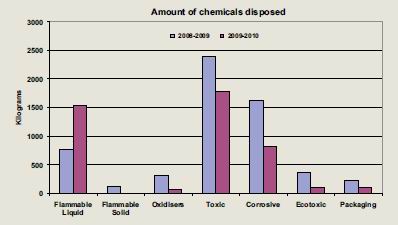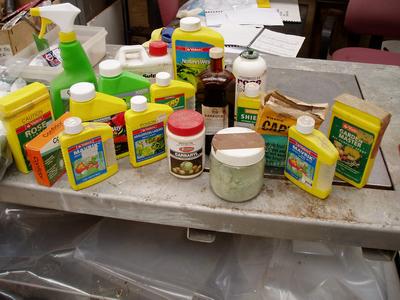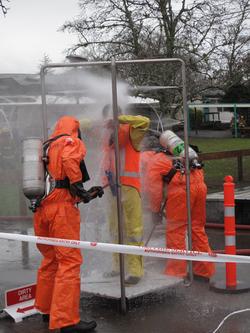Waste hazardous substances
Within this section…
Collection and operational depots
The Council, in conjunction with PGG Wrightson Ltd., operates four collection depots in Northland for unused waste hazardous substances. To find out more about these facilities, go to www.nrc.govt.nz/agrichemicalcollection
The Council also operates a mobile collection service for the collection of chemicals that may be leaking or in broken containers, from individual properties. To learn more about how to properly dispose of household hazardous waste, and to see whether you qualify for the free service, go to www.nrc.govt.nz/homehazwaste
Once collected, the waste is transported to the Council's facility at Re:Sort transfer station in Whāngārei, where it is repackaged, labelled and placed in temporary storage before being despatched to Auckland for disposal. The collection programme allows people to dispose of waste hazardous substances responsibly, at no extra cost, rather than dumping them in the natural environment.
Waste hazardous substances collected
The hazardous waste that Council staff collects must be disposed of. Some of the waste can be treated or stored in New Zealand, but there are some products that must be treated overseas, mainly in Europe, in very sophisticated plants that destroy the waste in a manner that ensures they cannot cause environmental damage.
The total amount of hazardous waste collected in 2009-2010 was 4401kg. Of this, 732.4kg was exported, 180.4kg of this being persistent organic pollutants, which do not readily break down in the environment, and include DDT, Dieldrin and pentachlorophenol (PCP).
The chart shows the various categories of chemicals disposed of, as classified by their hazards. This excludes a significant volume, estimated at approximately a tonne of plastic agrichemical containers which were disposed of. The packaging referred to reflects the weight of steel drums that the waste must be packed into to meet the requirements of the Hazardous Substances and New Organisms Act.


Photo: Assorted household chemicals disposed of at the Re:Sort in Whāngārei.
Workplace inspections and emergency response
The Hazardous Substances and New Organisms Act, 1996 (1996 No.30) is the basis for how hazardous substances must be managed, and covers all aspects of the lifecycle of a hazardous substance, from raw material through manufacture, storage and use, and the disposal of hazardous waste.
The Regional Council is contracted to audit workplaces throughout Northland for compliance with this legislation, on behalf of the Department of Labour. This service has seen inspections in more than 170 sites by the Council's group of six warranted HSNO Enforcement Officers, in the past year, with over 70 follow-up visits. Sites vary greatly in their level of compliance, but those that have been visited show a high level of compliance once they have been through the process.
The Council also provides a 24-hour, seven day a week incident response capability for emergency incidents involving hazardous substances, as well as liaising closely with other emergency management services. In 2009-2010, the Regional Council attended 10 incidents involving hazardous substances, including a fire at Kerikeri High School, from which hazardous waste was also removed. An illegally laid cyanide incident was also attended in the Dargaville area.

Photo: Regional Council staff being decontaminated at Kerikeri High School, following removal of chemical waste. (Photo: Peter de Graaf, Northern Advocate).
